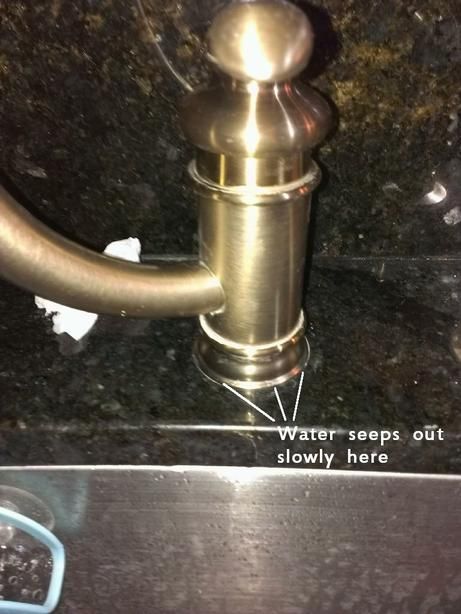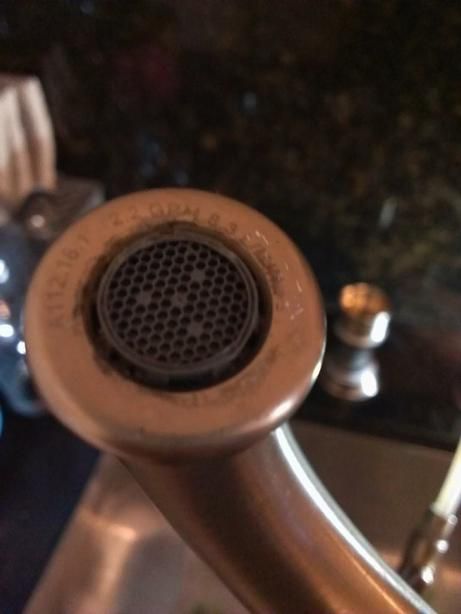 
Over 698,000 strictly plumbing related posts
Plumbing education, information, advice, help and suggestions are provided by some of the most experienced plumbers who wish to "give back" to society. Since 1996 we have been the best online (strictly) PLUMBING advice site. If you have questions about plumbing, toilets, sinks, faucets, drains, sewers, water filters, venting, water heating, showers, pumps, and other strictly PLUMBING related issues then you've come to the right place. Please refrain from asking or discussing legal questions, or pricing, or where to purchase products, or any business issues, or for contractor referrals, or any other questions or issues not specifically related to plumbing. Keep all posts positive and absolutely no advertising. Our site is completely free, without ads or pop-ups and we don't tract you. We absolutely do not sell your personal information. We are made possible by: 
|
|
Author:
sum (FL)
Replacing a seal kit and o-rings on a faucet. Do I need to smear some lubricant on the new o-ring?
If so, what kind of lubricant? I have a tube of valve grease, is that good to use?
Edited 1 times.
|
|
Post Reply
|
|
|
Author:
pbw (OH)
a silicone grease is good, as in the packet that Moen sends
|
|
Post Reply
|
|
|
Author:
packy (MA)
yeah, silicone grease is a must have in any faucet repair tool kit.
|
|
Post Reply
|
|
|
Author:
sum (FL)
Ok thanks.
If I am replacing the o-ring on the faucet body, after I cleaned up the grooves on the body, do I apply lubrucant onto the groove, then slip the o-ring over it, then put more lubricant over it? Or do I just put the o-ring on, then smear lubricant on top?
Also there is a hard plastic part that comes with the o-ring, it is a split circle that goes onto two grooves just above and below the o-ring. Do I lubricate these two hard plastic split thingie? I think they are called "bearing"?
Edited 1 times.
|
|
Post Reply
|
|
|
Author:
sum (FL)
Well, I applied some silicone grease into the grooves of both the bearings and the o-rings on the top and bottom of the faucet body. Then put in the pair of new o-rings and bearings, then smeared more silicone grease around them with my finger.
After putting back the spout, then a brand new valve from Kohler, tightened the bonnet and put everything back. Turned water back on I noticed as I turned the faucet on there is still a bead if water seeping out of the base right where it meets the top of the countertop, although much much slower then it was before.
I then swiveled the kitchen faucet spout around a few times and now no more leak.
I assume when I swivel the spout around the silicone grease was spread around the spout casing and the body a bit better and that stopped the leak.
I have since turned on hot only, swivel around looking for leaks. None. I then turned to cold only and no leak, to the middle half hot half cold, no leak. Check the sink cabinet at the bottom side of the faucet, all dry.
If it leaked a little when I turned water back on and nothing since I swiveled the spout around, should I leave it alone, or should I take the whole thing apart again and apply more silicone grease?
Edited 1 times.
|
|
Post Reply
|
|
|
Author:
bernabeu (SC)
the grease is a lubricant, NOT a sealant
it merely allows the 'O' to seat properly
==============================================
"Measure Twice & Cut Once" - Retired U.A. Local 1 & 638
|
|
Post Reply
|
|
|
Author:
packy (MA)
what are you gonna do, put more on with a trowel? sounds like you have plenty on there..
|
|
Post Reply
|
|
|
Author:
packy (MA)
it does lubricate so as not to roll the "O" ring out of the grove when sliding the spout down.
|
|
Post Reply
|
|
|
Author:
sum (FL)
Packy this was the kitchen sink faucet that I had a very slow leak at the top which I posted about in this thread two weeks ago.
[www.plbg.com]
Curly had help identified this to be Kohler K-12176 so I called Kohler. The customer service rep told me they will send me a new valve and a new set of "seal kit". The seal kit contains two o-rings and two split bearings and a bag of silicone grease. Took two weeks to ship it to me fortunately it was a slow leak and only when water is on and the spout swiveled a certain way.
To recap here is a picture of the faucet.

Today I removed the spout and replaced the two o-rings and bearing, used the bag of silicone grease on them and replaced the valve.

When I put back the spout it was a bit tight I had to "finesse" it back into place. After I reassembled everything turned water under the sink back on, then turned faucet lever on after I wiped clean the counter top I saw a few beads of water seeped out from the base again, but MUCH SLOWER then before the replacement.

I then swiveled the spout left and right a few times and wiped the base clean again, turned water on again and this time no leak. I have since turned it on and off half a dozen times, hot only, cold only, mixed, with the spout in various positions, no leak.
So I am leaning to leaving it this way. Unless you guys think there must have been something defective in the parts or my install to have caused it to leak the very first time I turned it back on, and I should take it apart again to double check on it or put more grease.
|
|
Post Reply
|
|
|
Author:
sum (FL)
By the way, while I had the spout off, I wanted to remove the aerator to see if it needs cleaning or back flushing etc...
I was not able to take it apart, as the aerator is not a metal piece with two flat faces I can unscrew with a wrench. Instead it is plastic and sit flushed with the spout tip. I didn't have any tool with me at the time to remove it, may be a needle nose plier?


Edited 1 times.
|
|
Post Reply
|
|
|
Author:
Curly (CA)
I don't think you need the aerator removal tool on this one. I think the metal piece on the end of the spout will unscrew. May have to use a wrench to get started - use rag etc. to protect finish.
|
|
Post Reply
|
|
|
Author:
hi (TX)
Sum
The grease you should use is very important. Never use petroleum based grease (read vaseline or other) as as it can cause the O - rings to deteriorate over time. Always use silicone based grease or plumbers grease. Usually very expensive but can be bought in larger cans on popular Internet shopping sites. Silicone is technically of the rubber family made of a polymer of Silicon and oxygen. When used as a lubricant the material is mixed with a carrier which helps it position correctly. The grease is a combination of silicone oil with a thickener wbich can be an amphmorous fumed silica calcium strategy used in food applications or even powdered Teflon for more severe applications. It is the non curing base that I sometimes worry about. I believe it is a food grade mineral oil which may make this lubricant able to dissolve some rubber O rings. The silicone is water repellant and tolerance of higher temperatures which makes it good to protect and lubricate other rubber products like O rings. There are even forms of silicone which are even used as a effective personal lubricant.
Silicone rubber is also used for O rings which can be recognized by their color translucent clear or even red I believe. The red ones have other fillers to increase strength or reduce cost. These elastomer or rubber like products are more resistant to UV deterioration the the usual butyl or rubber O rings. They are widely used in food industry (read 2" milk pipes) again due to their favorable water repellant properties and wide temp range(-60 C to 300C)
The O ring is a swedish invention by J. O. Lundberg, the inventor of the O-ring, received the first patent for the O-ring on May 12, 1896
Interesting reading on wiki if you are so inclined.
[en.wikipedia.org]
How to measure O-Ring video
[www.youtube.com]
how to describe O-ring
Two dimensions describe the size of an O-ring:
its inside diameter (ID) and its cross-sectional
diameter (CS)
another good way to measure oring
[www.ehow.com]
I wish the manufacturers would get together and standardize the common sizes used by orings so they wouldn't be so many and so confusing.
Edited 2 times.
|
|
Post Reply
|
|
|
Author:
sum (FL)
Curly you are right I may be able to unscrew the "rim" around the tip of the spout. I didn't even think to try that.
|
|
Post Reply
|
|
|
Author:
sum (FL)
hi thanks. I was using the silicone grease pack that came with the seal kit. I find it hard to work that into the grooves without smearing and smudging everywhere. I was debating if I should use a Q tip but decided not to risk having some loose cotton strands mixed in there.
|
|
Post Reply
|
Please note:
- Inappropriate messages or blatant advertising will be deleted. We cannot be held responsible for bad or inadequate advice.
- Plbg.com has no control over external content that may be linked to from messages posted here. Please follow external links with caution.
- Plbg.com is strictly for the exchange of plumbing related advice and NOT to ask about pricing/costs, nor where to find a product (try Google), nor how to operate or promote a business, nor for ethics (law) and the like questions.
- Plbg.com is also not a place to ask radiant heating (try HeatingHelp.com), electrical or even general construction type questions. We are exclusively for plumbing questions.
Search for plumbing parts on our sponsor's site:
Special thanks to our sponsor:

|








